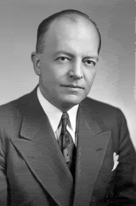On the morning of Dec. 7, 1941, some guys from St. Paul fired the first American shots of what would become World War II. They were members of the Minnesota Naval Reserve, patrolling Pearl Harbor in the destroyer USS Ward. The St. Paul boys spotted a Japanese mini-submarine sneaking into the harbor and destroyed it before it could sink a big ship in the narrow channel, blocking the U.S. fleet's access to the sea.
An hour later, Japanese planes swooped in and "a date which will live in infamy" began.
The story of these hometown heroes is one of many fascinating tales told at the Minnesota Military Museum at Camp Ripley, the National Guard training site 20 miles south of Brainerd. Each summer, thousands drive past the museum's small buildings on the way to the North Country, without even knowing it is there.
That's the lede in Katie's column June 21. For military history buffs, the Minnesota Military History Museum is definitely a place to go. Katie mentions several units and wars, but there is one old Minnesota sailor, now gone, that Spot admires and that Katie did not mention. Harold Stassen. Stassen resigned the governorship to enter the Navy during the Second World War. Here's a little about Stassen from an obituary in the Pennsylvania Gazette, a University of Pennsylvania alumni publication:

Few university presidents have ever boasted a more impressive resume. Stassen was first elected governor of Minnesota when he was only 31 and delivered the keynote address at the 1940 Republican convention, where he helped clinch the nomination for Wendell Willkie. Reelected twice, he resigned in 1943 to go on active duty in the Navy, serving as chief of staff to Admiral William Halsey in the South Pacific. President Franklin Roosevelt named Stassen to the American delegation to the first United Nations conference in San Francisco, where he helped write the UN Charter and was voted the most effective delegate.
Why did the University of Pennsylvania do an extensive obit on Stassen, Spotty?
Well, he was president of the University for a time after the war, grasshopper. Here's a little more about the Navy service from the Minnesota Historical Society:
Four months into his third term Stassen resigned and enlisted in the Navy (April 27, 1943). He served as Admiral William F. Halsey's assistant chief of staff, was decorated three times, awarded six major battle stars, and was in charge of the Navy's prisoner evacuation program in Japan. He was released from active service on November 15, 1945. During his Naval service Stassen was selected by President Roosevelt as a delegate to the United Nations charter conference in San Francisco (April-June 1945). [italics are Spot's]
A brilliant—and yes, obsessed—man, Harold Stassen gave his greatest service to his country after resigning as governor, a job that he apparently could have had about as long as it wanted it. He coordinated the Navy's prisoner evacuation program, and he was voted the most effective delegate to the UN conference. Just let that sink in for a moment. It is regrettable that Stassen is remembered mostly for his quixotic runs for the presidency.
Harold Stassen was a chief architect of post-WWII multilateralism, a spirit that gave us no only the UN, but things like an international monetary system, and the several Geneva Conventions.
You know, Governor Pawlenty is still young enough to sign up to fight the war he seems to be keen on. He clearly isn't going to be vice president any time soon. What do you say, Tim? It could be a real resume builder.
No comments:
Post a Comment